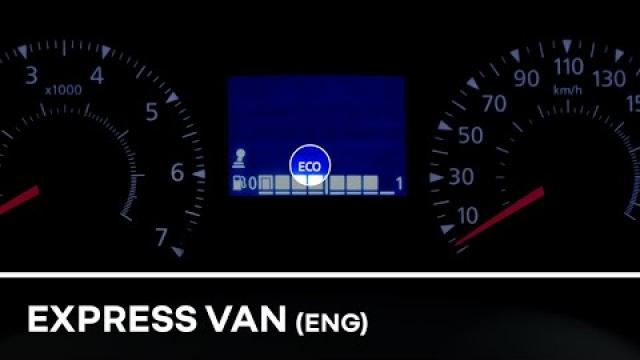DRIVING ADVICE, ECO DRIVING
Fuel consumption is accredited in accordance with a standard regulatory method. Identical for all manufacturers, this enables vehicles to be compared with one another. Consumption in real time depends on vehicle usage conditions, the equipment fitted and the user’s driving style. To optimise fuel consumption, please refer to the following advice.
Depending on the vehicle, you will have various functions which enable you to lower your fuel consumption:
- the rev counter;
- gear change indicator;
- ECO mode;
- the Stop and Start function STOP AND START FUNCTION.
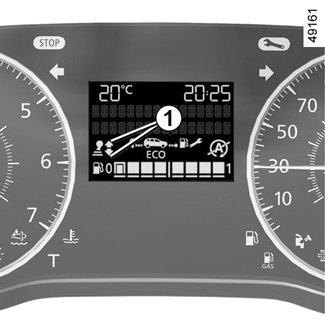
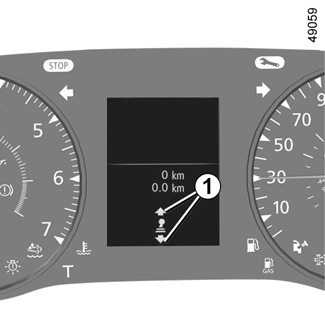
Gear change indicator 1
Depending on the vehicle, to obtain optimum consumption levels, a warning light on the instrument panel lets you know the best time to move up or down a gear:
Š move up a gear;
‰ move down a gear.
If you regularly follow this indicator, you will reduce your vehicle’s fuel consumption.
ECO mode
ECO mode is a function which optimises fuel consumption. It affects certain driving operations (acceleration, shifting gears, cruise control, deceleration etc.).
Limiting acceleration enables low fuel consumption in urban and surrounding areas.

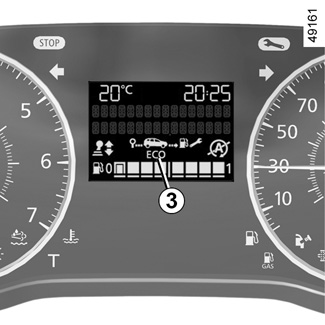
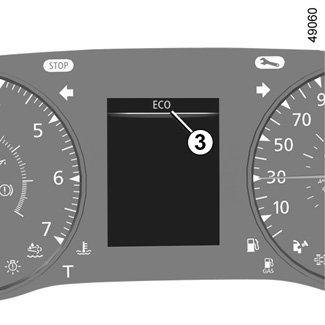
Activating the function
Press switch 2.
The 3 warning light comes on on the instrument panel to confirm activation.
While driving, it is possible to leave the ECO mode temporarily in order to improve engine performance.
To do this, press the accelerator pedal firmly and fully.
ECO mode is reactivated when you take pressure off the accelerator pedal.
Disabling the function
Press switch 2.
Warning light 3 goes out on the instrument panel to confirm deactivation.
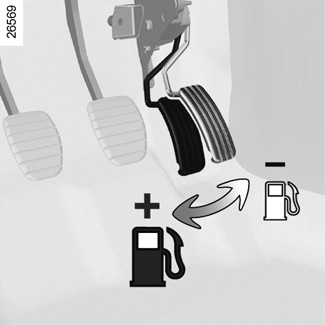
Driving advice, ECO driving
Behaviour
- Drive carefully for the first few miles until the engine reaches its normal operating temperature, rather than let it warm up while the vehicle is stationary.
- High speeds significantly affect the vehicle’s fuel consumption.
Examples (at a steady speed):
- reducing the speed from 80 mph (130 km/h) to 68 mph (110 km/h) approximately allows you to save up to around 20% of fuel;
- reducing the speed from 56 mph (90 km/h) to 50 mph (80 km/h) approximately allows you to save up to around 10% of fuel.
- Dynamic driving with a lot of frequent acceleration and braking is expensive on fuel in comparison to the time saved.
- Do not overrev the engine in the intermediate gears. Always use the highest gear possible without labouring the engine.
- Avoid sudden acceleration.
- Brake as little as possible. If you anticipate an obstacle or bend in advance, you may then simply release the accelerator pedal.
- Do not try to maintain the same speed up a hill, accelerate no more than you would on the level. Keep your foot in the same position on the accelerator pedal.
- Double declutching and accelerating before switching off are unnecessary in modern vehicles.
- Bad weather, flooded roads:
| Do not drive through floods if the water is above the lower edge of the wheel rims. |
Heating levels
It is normal to notice an increase in the vehicle’s fuel consumption when using the heating (particularly when the outside temperature drops below zero) or air conditioning.
Obstructions to the driver
On the driver’s side, only use mats suitable for the vehicle, attached with the pre-fitted components, and check the fitting regularly. Do not lay one mat on top of another.
There is a risk of wedging the pedals.
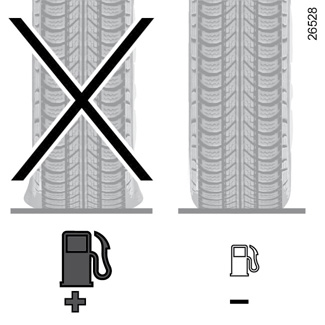
Tyres
- An underinflated tyre increases fuel consumption.
- To optimise fuel consumption, set the highest speed tyre pressure or the recommended pressure indicated on the edge of the driver’s door. TYRE INFLATION PRESSURES.
- The use of non-recommended tyres can increase fuel consumption.
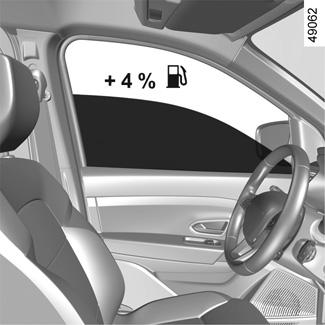
Advice on use
- Favour the ECO mode.
- Electricity is fuel; switch off all the electrical components which are not really needed. However (safety first), keep your lights on when the visibility is bad (“see and be seen”).
- Use the air vents. Driving with the windows open at 60 mph (100 km/h) will increase fuel consumption by 4%.
- Never fill the fuel tank right to the brim to avoid overflow.
- On vehicles equipped with a non-automatic air conditioning system, switch off the air conditioning when it is not required.
Advice for reducing consumption and therefore helping to preserve the environment:
- If the vehicle has been parked in the sun, open the doors for a few moments to let the hot air escape before starting the engine.
- Do not leave an empty roof rack fitted to the vehicle.
- It is better to fit a trailer for bulky objects.
- When towing a caravan, fit a wind deflector and adjust it carefully.
- Avoid using the car for door-to-door calls (short journeys with long waits in between) because the engine never reaches its normal operating temperature.

